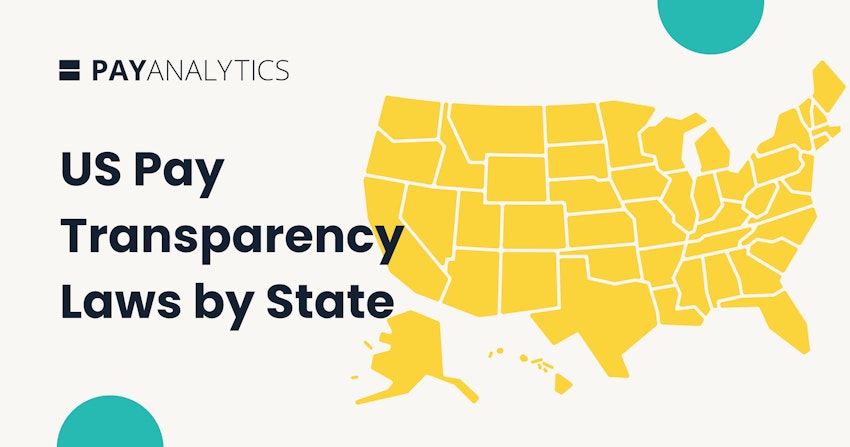Workplace equity: A return to the human-centered workplace

In Part 1 of this two-part series, we covered the ‘what’ of workplace equity. Now, we’ll talk more specifically about what steps you can take to become a workplace that’s sustainably diverse in practice.
First, let’s take a moment to review the key terms involved in this article. If you’re ready for the more advanced course, skip ahead. If you’re already prepared to talk to PayAnalytics about how you can kick off your pay equity efforts in 2024, drop us a line.
Key terms: A quick review of diversity, equity, and inclusion
Employers’ efforts to improve workplace equity are usually discussed under the umbrella of diversity, equity, and inclusion (DEI) efforts.
The D (diversity) in DEI seeks to answer questions such as:
- Are employees of all backgrounds equally represented throughout the organization, across departments and job functions, and at all levels of seniority, responsibility, and salary levels?
- Are all demographic groups represented among new hires across job roles and salary levels?
- Is there bias in the annual raise and promotion process?
The E (equity) in DEI seeks to answer questions like:
- Is the salary structure internally fair, or are there demographic pay gaps?
- Is performance assessed consistently and without bias?
The I (inclusion) in DEI asks us to examine questions like:
- Do all employees feel equally valued and accepted in the organization?
- Does the workplace accommodate employees’ diverse needs?
Doing DEI well: What we’ve seen work
Every organization has its own unique context, culture, and history. This makes it impossible to talk about one-size-fits-all solutions for DEI. But based on what we’ve seen in working with organizations worldwide, we observe two major steps towards workplace equity. And within the second step, we can talk about the conditions that organizations create to foster an equitable workplace.
Two main steps to workplace equity
Many organizations take a two-pronged approach in moving towards workplace equity.
1. The first step is to fix any immediate issues related to compensation inequity.
These actions are the most tangible and immediately felt by employees. Fixing these issues involves measuring the pay gap, applying corrective raises/promotions to underpaid employees to close the adjusted pay gap, and implementing data-driven decision-making tools that prevent the gap from reappearing. In other words, companies start by eliminating the difference between individuals’ earnings in cases where that difference is unfair.
2. The second step is to implement motivated diversity, equity, and inclusion (DEI) strategies.
But diversity cannot remain an abstract number, simply because people aren’t numbers. As opposed to simply making “diversity hires,” good DEI efforts are broad and deep. They’re focused on making sure members of minority groups can show up at work as their full selves, as the sum total of their experiences, knowing that their employer is addressing barriers to advancement and working with employees to eliminate any non-inclusive aspects of the workplace.
Commonalities among employers who do DEI well
Among organizations that are doing DEI very well, we’ve seen a few commonalities. These companies create conditions that nurture equitable, healthy workplace cultures. Here are some of the common threads:
1️⃣ The organization is thoughtful in how it conceptualizes its DEI work
As we’ve discussed, there are a few different ways to conceptualize workplace equality.
The most common right now is the business case. Other employers conceptualize it from a perspective of pure justice and ethics. It may also be possible to think about DEI in terms of broader corporate citizenship. Research indicates that the knock-on effects of filling in chronic pay gaps ranges from increased lifespan—even adding $10,000/year to a lower-income minority employee’s salary can add years to their longevity—to gains in education, employment, and affluence from generation to generation.
2️⃣ The organization is in it for the long haul and recognizes that equity is a process
When implementing any new initiative, employees need to be supported. DEI efforts need to be monitored, evaluated, and possibly reevaluated as they play out. Remember that it’s not “one giant leap,” but one small step after another. The goal isn’t a utopia, but a realistic, incremental level of change.
3️⃣ The organization uses objective factors to guide hiring and advancement decisions
A company can close its pay gap and promote a litany of diverse workers into positions better fitting their qualifications. They do this by hiring and promoting based on objective factors, like education, experience, the skills required to perform certain jobs (such as analytical or communication skills), and the working conditions of the job. This creates an infrastructure in which diversity can thrive.
4️⃣ The organization is focused not just on hiring, but also on retention
If you’ve created an infrastructure in which diversity can thrive, then the employees need to be able to stick around. And different employees have different needs in terms of support. For instance, lack of schedule flexibility is often cited as a reason that women leave their current jobs. And promotion opportunities that allow too much room for unconscious bias may overlook or pass over members of minority groups.
Book a 1:1 demo to learn how PayAnalytics' solution can help you make diversity progress.
5️⃣ Employees have opportunities for growth and development
These opportunities can include traditional career advancement programs like managerial/executive training, or they can be more personalized approaches such as career mapping. Mentoring programs in particular have been shown to significantly boost representation of demographic minority employees.
Employers might also consider partnerships with educational institutions to address broader issues of diversity within the talent pipeline. For example, some organizations reach out to nearby universities that have student populations in underrepresented groups.
6️⃣ There is representation at all levels of the organization
This is directly related to the previous point, but it bears stating explicitly. If minority group employees do not see members of minority groups at the upper levels of the organization, they may reasonably wonder whether they would have the opportunity and support they need to advance within the organization. If a company’s DEI efforts are paying off, they will not see a demographic change only within the middle or lower pay grades, but also in the upper echelons of the organization.
7️⃣ Their financial well-being is taken into consideration
Employees and job candidates in demographic minority groups may inherently face more financial precarity. In equitable workplaces, all employees are secure in the knowledge that they’re compensated fairly based on valid variables (like experience, education, management responsibilities, and working conditions). In addition, equitable workplaces will eliminate some common practices that often exclude minority group employees and job candidates—like allowing promotion decisions to be influenced by an employee’s putting in unpaid overtime, or offering unpaid internships as a gateway to entry-level work.
8️⃣ Employees at all levels are involved in the DEI process
Good DEI efforts will need to be heavily informed by the people who are most directly affected by them. Often, there is a working group of employees and management that focus on DEI and drive the process. The process may make use of listening sessions, surveys, and other input-gathering processes. This also means that employees throughout the organization receive appropriate training in DEI-related topics. For example, hiring managers, supervisors, and HR employees need to be aware of unconscious bias, so they would probably benefit from specific training on how to spot and avoid it.
9️⃣ Employees are empowered to bring their experience to the table
Creating and allowing chemistry among employees to thrive freely is key to discovering untapped reservoirs of creativity and innovation. But it only happens when people are empowered to bring their experience to the table, learn from each other, and contribute their ideas about improvements or changes to the way things are done. In a real sense, your task as an employer is to find ways to invite them in to learn about their perspectives and ideas—merely including them is not enough.
1️⃣0️⃣ Leadership is accountable to the DEI process and to the organization’s employees
Since equity is about making sure that employees can show up to work as their whole selves, the organization needs to show up fully as well. This means that it takes accountability. In equitable workplaces, we see that the leadership is held accountable in making sure that workplace equity and DEI efforts actually go somewhere: that plans are implemented, that milestones are met, and that employees’ feedback and concerns are heard and acted on.
The attitudes and behaviors of senior management and executives must be conducive to and supportive of a cultural change. By embracing a broader vision of what it means to carry out a lasting DEI initiative, they are the change they want to see in their organization.
Ask honest questions about long-held practices, culture, and tradition
In short, DEI efforts can really help employers create a more equitable workplace—but this only works if the organization is willing to follow through. This also requires the willingness to ask honest questions and perhaps face unexpected answers and situations. For example, it’s possible that employees or working groups may question long-held practices, organizational structures, or traditions that other employees value or rely on. In an honest process, these concerns can’t simply be swept aside or overlooked. This means that organizations that want to create a more equitable workplace need to be open to real change and accountability.
How PayAnalytics can help you set and reach your DEI goals
As we mentioned, the first step towards workplace equity is usually to close existing demographic pay gaps. PayAnalytics is a straightforward and customizable software solution that helps you identify any gaps, close them using targeted raises in the most cost-effective way possible, and make sure they do not reopen moving forward.
As your organization then implements DEI efforts, PayAnalytics’ Workforce Analysis feature helps you understand and analyze how your workforce composition is changing. With Workforce Analytics, you can:
- Analyze the current workforce diversity, including representation in different groups and pay levels.
- Analyze the diversity in hiring and attrition to understand how your workforce is changing.
- Analyze whether there are any demographic differences in raises or promotions.
Get started with PayAnalytics today by booking a 1:1 with our pay equity specialists.





